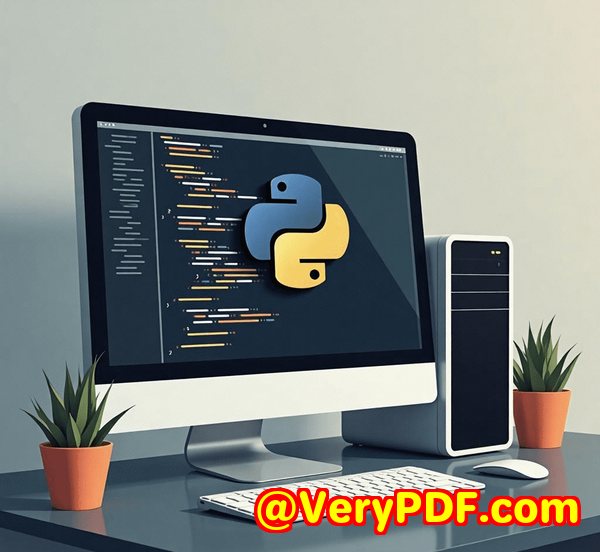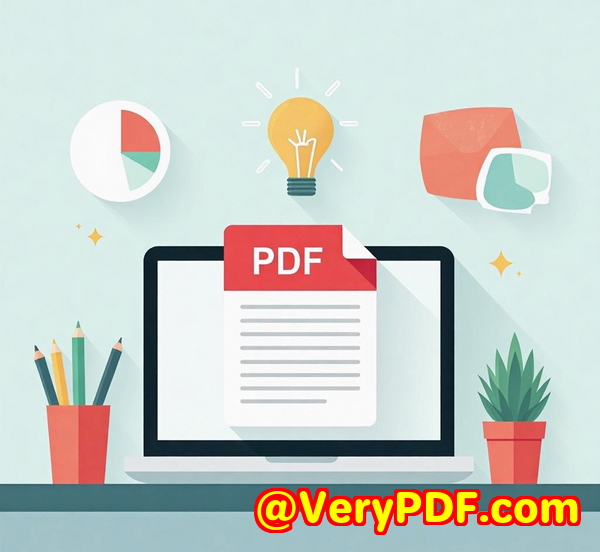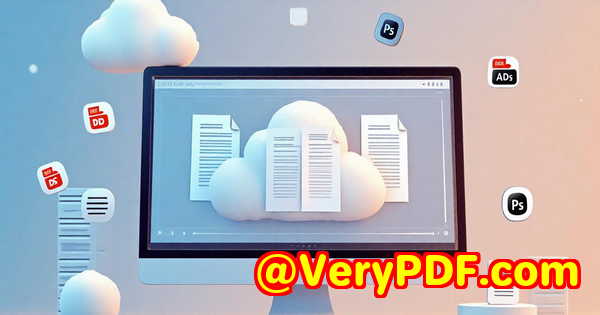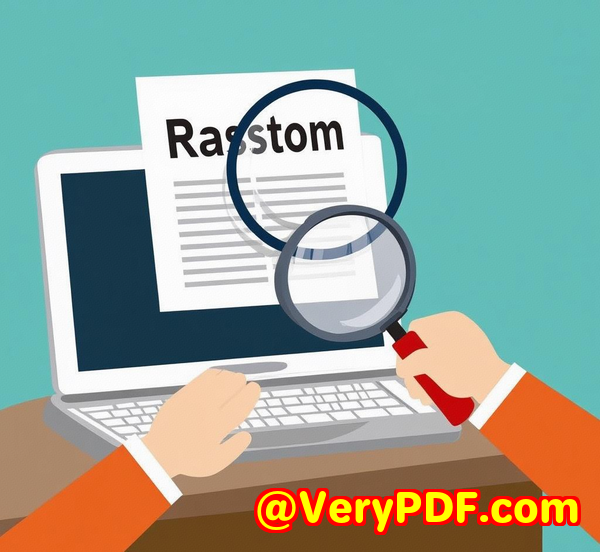Best way to layer scanned form overlays over digital PDFs in healthcare documentation
Best way to layer scanned form overlays over digital PDFs in healthcare documentation
Every time I've dealt with healthcare documentation, the hassle of combining scanned forms with existing digital PDFs felt like a nightmare. You have these crucial patient forms, insurance documents, and consent papers, often scanned from physical copies, and they all need to be perfectly layered over digital records. It's not just about slapping one PDF on top of another the details matter. If anything shifts or the quality drops, you risk compliance issues, patient misunderstandings, or just plain inefficiency.

If you've been in healthcare IT or admin, you know the pain of trying to manually merge scanned paper forms with digital documents or using clunky software that ruins the quality or messes up the layout. That's where VeryPDF PDF Overlay Command Line and SDK stepped in and completely changed the game for me.
What exactly is this overlay stuff? Simply put, it's a way to put one PDF layer on top of another without losing the sharpness or structure of either. Imagine having a scanned formlike a patient intake sheetwith all its handwritten notes and signatures. You want to overlay that onto an existing digital PDF like an electronic health record template, keeping everything crystal clear and perfectly aligned.
I discovered VeryPDF's tool while searching for a solution that didn't rely on sketchy online services or slow cloud apps. The VeryPDF PDF Overlay SDK runs completely offline and supports both Windows and Linux, which was ideal for our hospital's secured environment where internet access is restricted for patient data protection.
Why healthcare documentation teams need this tool
Hospitals, clinics, and insurance companies all face the same challenge: combining scanned documents with digital records without breaking patient confidentiality or sacrificing quality. If you've ever tried merging PDFs in bulk, you'll know how often fonts get messed up, images blur, or pages shift around all of which can lead to costly errors or compliance headaches.
VeryPDF's overlay solution isn't just about layering pages; it preserves vector graphics, fonts, and high-res images. This means the final merged PDF looks exactly like the originals no pixelation, no weird shifts.
How the VeryPDF PDF Overlay SDK saved my workflow
I use this tool primarily in our batch processing pipeline. Here's what made it stand out:
-
Standalone and offline: The SDK runs locally, no internet needed. This was a game-changer in our HIPAA-compliant environment where cloud solutions were a no-go.
-
Precision layering: I could overlay scanned intake forms exactly over specific parts of digital EHR templates. It lets you position overlays at custom coordinates, so nothing overlaps in the wrong place.
-
Batch processing: We had thousands of scanned forms to combine with corresponding digital records. The command line interface made it easy to script bulk overlay jobs, saving hours every week.
-
Cross-platform compatibility: Our backend runs a mix of Windows servers and Linux containers. VeryPDF supports both seamlessly, no need for multiple tools.
-
Custom logic flexibility: For certain departments, I programmed different overlays insurance disclaimers for billing, confidentiality stamps for medical records. This targeted control made internal audits smoother.
Before using this, we tried some free PDF merging tools. They either crashed with large batches or flattened everything into low-res images. That meant losing searchable text or vector clarity a no-no for official healthcare documents. VeryPDF's SDK maintained everything in pristine quality.
One example: We had a batch of scanned consent forms signed on paper. We needed to overlay these on top of digital procedure templates for patient files. Using VeryPDF, the overlay process preserved every scribble, signature, and note perfectly aligned ready for secure archiving or electronic submission.
Who should use VeryPDF PDF Overlay SDK?
If you work in healthcare IT, medical records, insurance claims processing, or any field where scanned forms must be layered onto digital PDFs, this tool will save you time and headaches. It's also a solid choice for print centres handling healthcare paperwork or legal teams dealing with scanned contracts overlayed onto templates.
What makes VeryPDF's solution stand out?
-
No reliance on internet: Total control in secured environments.
-
High fidelity output: Vector and text preservation means professional print-ready PDFs.
-
Flexible integration: Command-line and API interfaces fit into any workflow from simple scripts to complex enterprise systems.
-
Batch processing: Handles thousands of docs efficiently.
-
Cross-platform: Works on Windows, Linux, and in containers.
Real talk: how this impacted my day-to-day
I remember the relief the first time I ran a full batch job and didn't have to babysit the process. The overlay matched perfectly, no errors, no quality loss.
Instead of spending hours manually layering documents or fixing broken PDFs, I was able to automate everything and focus on higher-value tasks. The ability to customize which overlays applied to which document types gave me peace of mind that nothing would be mixed up or misapplied.
Plus, the tech support from VeryPDF was responsive and helped me tweak the SDK integration so it fit our exact needs. That level of service made adopting the product painless.
Wrapping it up
If you're tasked with layering scanned forms over digital PDFs in healthcare or related fields, VeryPDF PDF Overlay SDK is hands down one of the best tools out there.
It handles complex overlay tasks with precision, preserves document quality for legal compliance, and runs offline in secure environments.
I'd highly recommend it to anyone dealing with large volumes of PDF overlaysespecially if you want to automate workflows without sacrificing quality or control.
Click here to try it out for yourself: https://www.verypdf.com/
Start your free trial now and see how much time you can save while ensuring your documents look perfect every time.
Custom Development Services by VeryPDF
VeryPDF offers tailor-made development solutions to fit your unique PDF processing and document management needs.
Whether you're working on Linux, macOS, Windows, or server environments, VeryPDF's team can develop custom utilities using Python, PHP, C/C++, Windows API, Linux, Mac, iOS, Android, JavaScript, C#, .NET, and HTML5.
Their expertise includes creating Windows Virtual Printer Drivers that generate PDFs, EMF, or images, along with tools to capture and monitor print jobs across all Windows printerssaving them in formats like PDF, EMF, PCL, Postscript, TIFF, and JPG.
VeryPDF also specialises in system-wide or app-specific API hooking to monitor file access, plus advanced document format analysis for PDFs, PCL, PRN, Postscript, EPS, and Office documents.
Beyond that, they provide barcode recognition and generation, OCR for scanned TIFFs and PDFs, table recognition, report generators, image conversion, and cloud-based solutions for digital signatures and document security.
If you have specific technical challenges or need a custom workflow, contact VeryPDF via their support centre at https://support.verypdf.com/ and discuss your project requirements with their experts.
Frequently Asked Questions (FAQs)
Q1: Can VeryPDF PDF Overlay SDK handle scanned images with handwritten notes?
Yes. The SDK preserves the original scanned image quality, including handwriting, signatures, and stamps, overlaying them precisely on digital PDFs without quality loss.
Q2: Is the SDK compatible with both Windows and Linux?
Absolutely. VeryPDF PDF Overlay SDK runs smoothly on Windows servers, various Linux distributions, and can be containerised for cloud deployment.
Q3: Can I automate overlaying thousands of PDFs in one batch?
Yes. The command-line interface supports scripting for batch processing thousands of documents efficiently.
Q4: Does the overlay process affect searchable text or vector graphics in the PDFs?
No. The SDK preserves vector content and searchable text, ensuring professional-quality output suitable for printing and archiving.
Q5: What kind of support does VeryPDF provide after purchase?
VeryPDF offers a 1-year technical support and bug fix guarantee with every SDK license, including developer documentation and sample integration guides.
Tags/Keywords
-
PDF overlay healthcare documentation
-
overlay scanned forms on PDFs
-
healthcare PDF processing tools
-
batch PDF overlay software
-
VeryPDF PDF Overlay SDK



